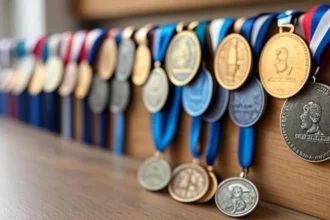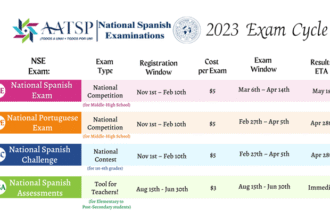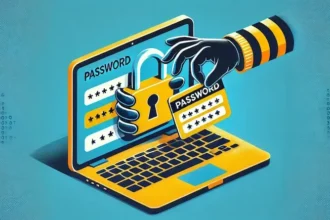Grooming your dog doesn’t have to be a stressful or complicated process. With the right tools, you can ensure your pet is clean, comfortable, and looking their best. From maintaining a healthy coat to trimming nails, using the correct grooming tools makes all the difference in achieving quality results. Below, we’ll explore the essential tools that can simplify the process for you and your furry friend.
The Basics of Dog Grooming
Before we jump into specific tools, it’s important to understand why grooming is essential. Grooming isn’t just for aesthetics; it plays a vital role in your dog’s overall well-being. Regular grooming helps prevent skin issues, infections, matting, and injuries from overgrown nails. It also strengthens the bond between you and your dog, allowing you to inspect their body for any irregularities like lumps, parasites, or skin dryness.
You must build a grooming kit tailored to your dog’s breed, size, and coat type to get started. This kit will act as your go-to set for every grooming session.
Essential Tools for a Thorough Grooming Routine
1. Brushes and Combs
A dog’s coat type largely determines what brush or comb you should use. For instance:
- Short-haired breeds benefit from bristle brushes, which help remove loose hair and dirt.
- Long-haired breeds or those prone to tangles need slicker brushes to detangle and remove mats.
- Double-coated dogs often require an undercoat rake to remove dead fur without damaging their soft topcoat.
Regular brushing reduces shedding, prevents knotting, and distributes natural oils for a healthy shine.
2. Nail Clippers and Grinders
Overgrown nails can cause discomfort, posture issues, or even infections in dogs. A reliable pair of nail clippers or a grinder can help keep their nails in check. While clippers are simple and effective for many dogs, grinders are safer for pets prone to struggling or those with thicker nails. Always proceed cautiously and trim in small increments to avoid cutting into the quick, sensitive area inside the nail.
3. Bathtime Necessities
Bathing your dog periodically is vital for hygiene and odor control. While over-bathing can strip natural oils from their coat, the right frequency depends on your dog’s lifestyle and coat type. Make sure to stock up on:
- Dog-friendly shampoo is designed to cater to sensitive skin and maintain coat health. Avoid using shampoos meant for humans.
- A detachable showerhead or pet sprayer for better maneuverability.
- Towels or an absorbent drying cloth to wick moisture away after baths.
Drying is an important step that prevents skin infections. Some pet owners also use blow dryers on low heat to accelerate the drying process.
4. Ear and Eye Care Tools
Cleaning and maintaining your dog’s ears and eyes is often overlooked but equally important. You’ll need:
- Ear-cleaning solutions to prevent wax buildup or infections. Use cotton pads, but avoid inserting anything directly into the ear canal.
- Tear stain removers for dogs prone to discoloration around their eyes. Gentle care is key when cleaning such sensitive areas.
5. Scissors for Precise Grooming
Sometimes, you’ll need more precision than clippers or general tools can offer. Scissors for dog grooming are ideal for trimming fur around sensitive areas like the face, ears, or paws. They give you control and allow for detailed styling while keeping your dog comfortable. Ensure the blades are sharp and designed with safety tips to avoid injury.
6. Clippers for Full-Body Grooming
For dogs in need of a full-body trim, grooming clippers are indispensable. Electric clippers are fast and efficient, making them suitable for dogs with thick or long coats. Select blade settings according to your dog’s specific grooming requirements. Always work slowly and in the direction of hair growth to achieve an even cut.
7. Dental Care Supplies
Good oral hygiene is vital for preventing dental diseases that can lead to pain or even systemic health issues. Equip yourself with:
- Dog-specific toothpaste (never use human toothpaste).
- Finger brushes or soft-bristled toothbrushes. Regular brushing and dental treats significantly reduce plaque buildup and bad breath.
Grooming Tips for Stress-Free Sessions
- Introduce tools gradually. Before using any grooming tool, allow your dog to inspect it. This helps reduce anxiety.
- Create a reward system. Positive reinforcement through treats or praise during and after grooming sessions helps build trust and cooperation.
- Stick to a schedule. Consistency in grooming makes the process more predictable and less stressful for your dog.
- Prioritize their comfort. Use non-slip mats, ensure tools are the right size, and take breaks if your dog seems uneasy.
Wrapping Up
Dog grooming is an important aspect of responsible pet ownership. With the right instruments and techniques, you can transform an often-daunting task into a manageable and even rewarding activity. By investing in high-quality grooming tools and taking the time to learn how to use them effectively, you’ll contribute to your dog’s comfort and overall health. Whether trimming nails, detangling a matted coat, or bathing your pup, the right equipment ensures a smooth and safe experience for both of you.





![Exploring the Life and Legacy of len pullen: A Trailblazer in [Field/Industry]](https://reelsmedia.co.uk/wp-content/uploads/2025/02/len-pullen-2-330x220.jpg)











